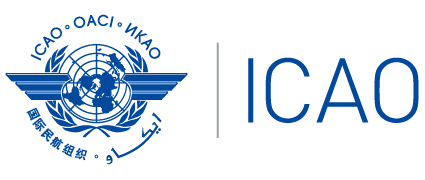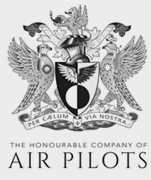HR best practices in the area of DEI
HR best practices in the area of DEI
Introduction
Implementing the best HR practices in DEI is a crucial aspect to create the best conditions in the workplace where all employees feel valued, respected and empowered and give the best of themselves.
Is DEI a task for HR exclusively?
DEI is not a task for HR exclusively, and one could argue that it should be a corporate function reporting directly to the CEO, so as to ensure visibility and transversality as well as strategic management endorsement and accountability.
Leadership commitment and accountability: demonstrating leadership’s visible commitment to DEI through statements, actions, and resource allocation is key. Leaders should be held accountable for advancing DEI goals and incorporating DEI metrics into performance evaluations to help drive meaningful progress.
Having said this, implementing a functional DEI programme requires the full support of HR, which is in charge of managing human capital. HR interacts with many other processes in the organisation and some key HR activities and practices are crucial to making DEI successful.
HR carries out the processes throughout the employee lifecycle and manages the data pertaining to employee diversity and positions within the organisation. Therefore, to implement meaningful DEI practices, HR processes need to be viewed with a DEI lens. This starts with the image that the organisation projects to engage and attract staff through recruitment and continues for the rest of the employee lifecycle (i.e. in the context of retention, development, etc.) all the way up until offboarding (i.e. knowledge transfer and succession) and/or retirement.
Data reporting
What does not get reported, does not get managed – and what does not get managed can hardly get changed.
Data collection through reporting is fundamental in ensuring that programmes are functional and that areas of concern, opportunities, as well as goals and targets are identified. Often, this data is mainly collected and managed by HR departments.
Regular assessments and benchmarking
Conducting regular assessments of workforce demographics, trends, employee engagement, and the DEI situation within organisations will help to identify areas for benchmarking, learning and improvement. Gathering feedback from employees through surveys, focus groups, and one-on-one conversations can provide valuable insights into progress that can be tracked over time. Of course, employee feedback should be treated with utmost confidentiality in order to ensure open and honest input as well as protection for employees.
Employee lifecycle
Throughout the employee lifecycle, it is important to ask whether the processes in place are creating barriers or opportunities. Various examples of questions can be found below:
Employer branding
- What image is the organisation projecting with regard to DEI (particularly in corporate communications and social media)?
- Is this aligned with the organisation’s stated values, company culture, and DEI statements?
- How is this image portrayed?
- How is this image understood and interpreted? What is the target audience and the tone needed for this audience?
- Which channels are used to reach the desired target audience?
- What kind of data is used for better employer branding?
- What is being done to engage with community organisations, educational institutions, and industry associations that can significantly support collaboration on DEI initiatives and leverage resources and expertise?
Recruitment
- How unbiased are the recruitment process and the recruitment tests (e.g. establishing diverse recruitment objectives, blind CV reviews, etc. to counter (unconscious) bias in the selection process?)
- What techniques are being used to check that the process is objective?
- What steps are being taken to actively source candidates from diverse backgrounds through targeted recruitment efforts and specialised recruitment agencies, including job postings on platforms and in communities frequented by underrepresented groups?
- What data is used to steer recruitment practices?
Selection
- What selection methods are used?
- Is the selection board diverse and balanced? In what way? Is the comparison of the candidates against each other and against the preset criteria fair?
- What data is available on the selection criteria and results?
Onboarding
- What has the organisation put in place to welcome and involve new recruits in line with its DEI principles?
- How welcome and included do new recruits feel?
- How knowledgeable and culturally aware are those onboarding (mentoring) staff?
- Do the new recruits have access to relevant and important information on DEI and the resources and opportunities available?
- What data is available about onboarding: satisfaction, etc.?

Retention
Supporting staff through significant life milestones
- What life milestones have been identified?
- How are they addressed?
- What policies are in place to support employees through life milestones?
- What data is used to help with decision-making?
Employee engagement suggestions
- Looking at hiring practices (used by middle management in HR, PR, the financial department, etc.)
- Check the style and wording of job offers and promotion opportunities to ensure that they appeal to all groups
- Role models, using storytelling to help promote DEI both internally and externally
- Open days for girls and boys
- “Bring your child to work” days
- Visits to schools and ANSP visits for students
- Well-being officers to help implement change at local level in different organisational units and to provide information and feedback on how things are going
- Well-being days, covering topics such as nutrition, sports, work-life balance, parental leave, preparing for retirement, etc.
- Psychological support through consultations, literature and information
- Leave arrangements for caring for an elderly relative or family member with special medical needs
- Teleworking and flexible working arrangements
Often, there are rules and regulations for this. It is therefore necessary to review and update HR policies and procedures to ensure that they are equitable and inclusive in practice and can be complemented by anti-discrimination policies, for example.
Continuous learning
- How is DEI used as a retention strategy? Is there a learning policy?
- Who has access to learning opportunities?
- How is this promoted?
- What data is available and how is it used?
Career development
- How are employees encouraged (or not) to develop in their careers?
- What development, learning, and peer support paths exist?
- Are there other engagement and motivation tracks (e.g., mentoring, volunteering, exchanges, etc.)?
- How are they linked to learning and life milestones?
- What data is available and how is it used?
Organisational culture
- What organisational culture policies are in place?
- How are they enacted?
- What tools are in place to enable their implementation?
- Are there links to reporting tools?
- What data is available and how is it used?
What is organisational culture?
Organisational culture refers to the shared values, beliefs, norms, attitudes, and behaviours that characterise an organisation and how it is identified externally. It is the "mindset”, “personality" or “ethos” of the organisation and influences how staff interact with each other and with external parties, make decisions, and approach their work. However, organisational culture does not always refer to aspects such as individual personalities, organisational structure, certain key policies and procedures, mission and vision statements, etc.
Offboarding
- How are employees off-boarded?
- Where is the leaving discussion data recorded?
- How is this acted upon?
- How is knowledge transferred following exit interviews with leaving employees?
- Are there platforms or events for ex-colleagues?
- What data is available and how is it used?
Post-employment engagement
Each step in the life cycle will look and feel different for each organisation. It will depend on the organisation's size, structure, culture, and maturity in this field. There is no one-size-fits-all solution. However, certain trends and data analysis can be useful for all organisations.
Communication
Another important factor to consider is transparent communication in terms of the results, the KPIs, the data, the policies, the values and culture, and the efforts made and challenges faced.
Who has access to which information and to what end?
How is this communicated and how is it supportive of the end-goal of implementing a true DEI culture in the organisation?
Are regular updates provided through internal and external communications channels, town hall meetings, and annual reports that can help build trust and accountability?
Feedback
Creating a feedback loop on DEI practices in HR is vital to build a workplace where ideas and trust are valued. A focus should be placed on reporting and communicating, and it is vital that there is feedback on those reports in order to keep the momentum going.
Confidential volunteer reporting mechanism
Having an anonymous reporting system in connection with safety culture is not a novelty at aviation and aerospace organisations. A similar approach can also be taken when reporting DEI issues, which can often be very sensitive. Should companies decide that they want to keep the two streams of anonymous reporting separate, they can use various tools and HR processes such as confidential counsellors, or mediators. Organisations should encourage people to report observed behaviour swiftly so that it can be addressed quickly and discreetly. There are off-the-shelf products available on the market that can support such a process as well. Some examples of whistleblowing systems can be found below:
- Vault helps you realize your DEI goals - Vault (vaultplatform.com)
- FaceUp Whistleblowing System. For Companies and Schools.
- How to Report Harassment in the Work Place | Work Shield
- Certified Whistleblowing System - Anonymous & Safe | Vispato
Employee resource groups
This can provide a valuable platform for leaders to collect input and for employees from diverse backgrounds to connect, share experiences, and advocate for change within the organisation. Care should be taken to ensure that these groups do not become exclusive. They should be an integral part of the organisational setup.






